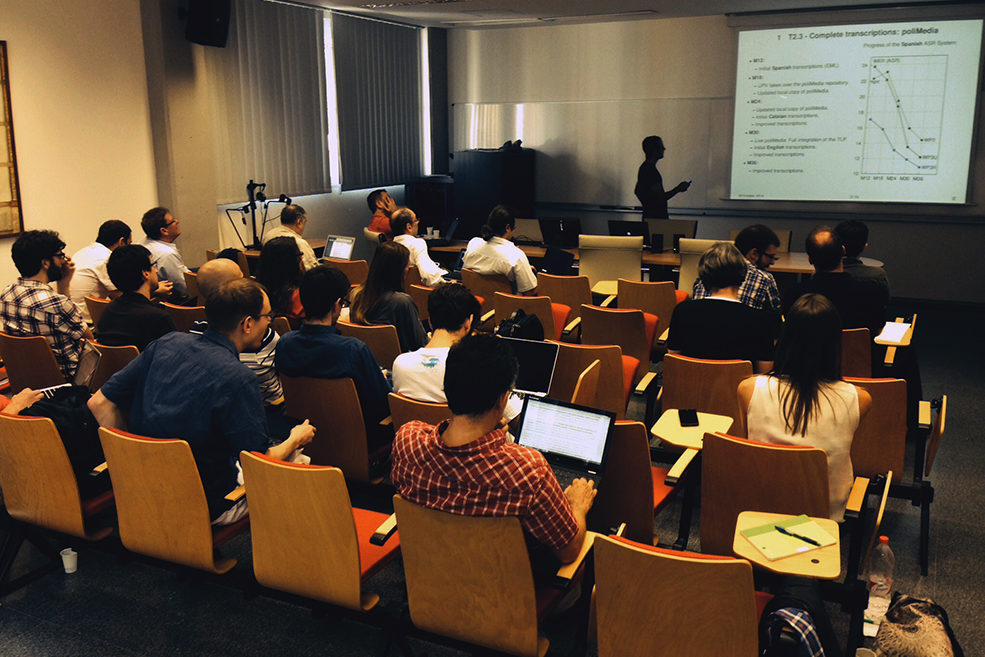| Pilot number: |
2 |
| Partner: |
UPV |
| Pilot name : |
Polimedia / UPV[X] |
| Initial asset: |
Polimedia repository – https://media.upv.es/ with 180,00 video objects, all transcribed and about 800 related slides |
| The need for X5gon solution: |
| The need is clear: the vast majority of MOOC platforms offer courses in English only; others in what can be considered ’well-resourced’ languages. In the case of UPV[X], this language is Spanish. This is a good first step, but coverage of under-resourced languages is needed. In the first instance, to enable speakers using under-resourced languages to access these courses in well-resourced languages (and vice versa). In the second, in order to truly open up the MOOC market and give a voice to universities/education institutions which, pre-X5gon, may not have considered it a worthwhile investment to produce/disseminate their own. A core value of MOOCs is that they foster knowledge-sharing and debate at the international level. They also serve to promote the institution itself, both to future students and within academia. But both of these things are only true if your MOOCs can cross your particular linguistic border. With MOOC enrolment and platform development on the rise, now is the time to get ahead of the competition through the trial and implementation state-of-the-art language solutions. By implementing X5gon solutions, UPV[X] can lead the way as an university platform for MOOCs created all over Europe. Technologically-speaking we are talking about developing technologies that are the stepping stone for a wide range of immediate derivative applications within education alone: advanced repository management, personalised learning, automated dialogues. On the longer term, the applications of working cross-lingual technologies are limited only by our imaginations. |
| Market potentials and target markets: |
| Based on the languages proposed, X5gon has the potential to open up UPV[X] to the whole of Europe. Given existing cooperation frameworks, a particular target for UPV[X] is to provide coverage to the whole of the Latin/Hispanic cultural block made up of countries in South America and the Iberian Peninsula (Spanish and Portuguese). As already mentioned, this “opening up” works both ways: UPV-produced courses will be accessible to students that speak all of the project languages, and courses produced by other universities in other project languages can be published (and made available in other languages) on UPV[X]. UPV[X] might also reach agreements with these universities regarding the issue of certificates. But beyond the MOOCs already being developed, X5gon solutions have the potential to actually incentivise MOOC creation and therefore expand the market: if solutions are available to make it so that e.g. a Lithuanian university’s MOOCs can be taken by students around the world, the incentive for this university to produce and disseminate them (using X5gon technologies) in the first place is greatly increased. And with more MOOCs will come more MOOC platforms and more video repositories that need to be managed or personalised. So not only would UPV[X] itself become a cross-lingual MOOC platform, but the technologies underlying X5gon and their derivative applications could be commercialised to these new platforms, which adds a new dimension to the certification-based business model. |
| Competitors and Ongoing RTD projects: |
| There are several big players in MOOC platforms: Udacity, Coursera, EdX, Udemy, along with innumerable smaller such enterprises. Some European platforms include FutureLearn, ALISON, and the EU’s OpenupEd, where the first two are arguably the most well-known. An existing Spanish-language MOOC platform would be Miriada X. Other RTD projects related to MOOCs include EMMA (see section 4.1). Other RTD projects related to X5gon technologies is transLectures (see section 4.1). |
| X5gon Pros/cons against existing products: |
Many of the competitive advantages that X5gon solutions would bring to UPV[X] over other monolingual or well-resourced-language-only MOOC platforms have already been discussed in previous sections. Here we provide an overview:
- Accessibility of videos and other course content to speakers of other languages and people with disabilities;
- Higher student retention rates as a result of fluid cross-lingual communication;
- Enriched debate and learning experience;
- Derivative applications of project technologies in all project languages.
|
| Expected business/value added benefits: |
| For the Universitat Politecnica de Valencia, the X5gon project would allow it to continue its research into machine translation, speech recognition, adaptation techniques, as well as more recent work in speech synthesis. It would also complement its plans to commercially exploit its transLectures foreground, with the possibility of merging services or, at the very least, adding new language combinations to the transLectures product. As with all MOOC platforms, the business model would revolve around certification. The courses themselves are available for free, but if students want professional/academic certificates, they would need to pay a fee. |
 Case Study
Case Study










